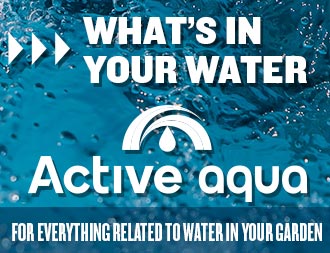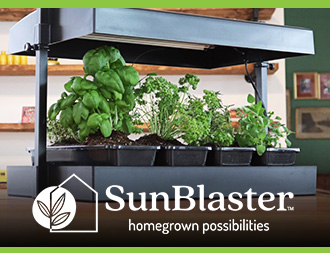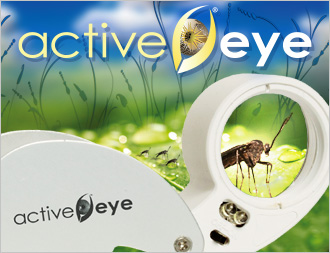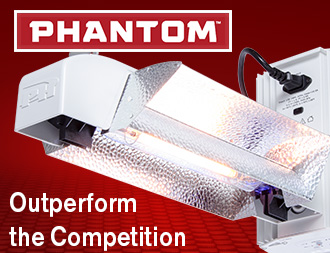Imagine! Fresh vegetables and flowers, year-round, without having to go to the grocery store or the florist... in fact, right in your own home! Sound like a dream? Not with hydroponic growing systems.
Bring the garden and fresh produce indoors without all the mess. While many of you still consider hydroponics to be a new way to grow your favorite plants, it's not so. Hydroponics, the art of growing plants without soil, has been around since the days of the ancient Egyptians.
Fast and Efficient
There are many advantages to growing plants hydroponically. It is the most efficient way to get food and water to plants - there's no weeding and cultivation, and because no soil is involved, no soil-borne diseases or insect problems. Experienced hydroponics growers find an increase in plant quality and in the quantity of produce. Complete nutritional control results in more uniform plant growth, a greater number of flowers and fruits.
Two myths have steered people away from considering a hydroponic garden. First, that it is too costly and second, that it is too complicated. While there are many advantages to paying for a proven commercial hydroponic growing system, there is another alternative. To get your feet wet, build your own system using materials you may already have; then, when you feel confident, buy the system you want.
Back to Basics
Starting any indoor garden begins with an understanding of the factors in the interior environment that influence plant growth. These include light, temperature and relative humidity.
Light will be the most limiting factor when bringing any garden indoors. The three aspects of light that are important are its type (quality), intensity (quantity) and duration. If you don't have enough natural light to grown the plants you want, buy the proper light to either supplement existing natural light or provide all the light the plants need. For further information on this subject, see the Fall 1993 issue of Houseplant Magazine (A Garden of Light; Choosing the Right Light, Hydroponics, Vol 2 No 3).
Temperature and relative humidity also affect plant growth and often go hand in hand. Most plants require a more humid environment than we do, and heated air, especially in the Midwest and eastern parts of the United States, does not contain enough moisture to keep humidity high enough for healthy growth. The optimum humidity level for most plants is 40 percent when the temperature is 70 degrees F (21 degrees C). Buy an inexpensive humidity and temperature meter to track humidity levels and adjust as necessary.
Nutrient Management
Besides awareness of environment factors, you must understand nutrient solution management. And a complete nutritional control requires a basic understanding of a plant's nutritional needs. You must supply the 16 essential mineral elements all plants need. There are two choices when formulating hydroponic nutrient solutions; mixing your own from individual fertilizer salts or using a commercially available fertilizer specifically formulated for growing plants hydroponically. It is best, especially if you are a beginner, to use commercial formulas that ensure all the nutrients plants require.
Choosing the System
With the basics in hand, it's time to choose the hydroponic system. Two basic requirements must be met in any system. First, providing adequate root support, and second, supplying nutrient solution and aeration.
Root support depends on the type of system you choose. There are two different systems, water based and media based. Water based is commonly referred to as Nutrient Film (or Flow) Technique (NFT). In this system, plant roots are suspended in a slow moving stream of nutrient solution. Media based systems use some type of soilless growing media to support plant roots and retain moisture. Pea gravel, sand, perlite, vermiculite, rockwool and other lightweight aggregates, such as Geolite, are common media used in these systems.
Gravel and Geolite are reusable after sterilization in a 10% bleach solution. Gravel and sand can be heavy to handle and, as in the case of sand, should be steam sterilized before and between each use. To wash off harmful dust, water perlite and gravel well before using.
Geolite, a lightweight aggregate, has become a popular medium in hydroponic growing systems, especially for orchids. It offers excellent water holding capacity, adequate aeration for proper root growth, does not decompose and lasts indefinitely.
Rockwool is a natural mineral fiber made from melted rock, commonly available in the form of cubes, slabs and loose fibers (granulates). Light, porous, sterile and easy to handle, it allows for an optimum ratio of water to air for root growth, even when overwatered. Chemically inert, taking on the nutrient charge of the solution applied to it, rockwool is an excellent media to start seeds and cuttings.
Go With the Flow
With your hydroponic system in place, now you must supply it with nutrient solution. The four widely used methods are manual, flood and drain, wick and automatic pump.
Gardeners are all too familiar with the manual watering system. You simply determine when and how much water your plants receive. With this method, though, be sure to apply the same amount of nutrient solution on a regular basis.
The next watering approach - flood and drain - takes its cue from nature. Nutrient solution fills the growing tray to a predetermined level from a separate holding tank. The tray fills with nutrient solution for the required time (based on type of plant being grown), then automatically drains from the system. With this method, you have the option of recycling the solution.
Wick watering simply enhances a naturally occurring plant process. Plant roots act like straws when water and nutrient solutions are present, taking up water and minerals as needed. Wicking material is fibrous, has the same drawing power as plant roots and is usually incorporated into the growing media so that it extends below the root system into the nutrient solution. This allows the plant to get to nutrients and water as it needs them.
The wick watering system is a passive hydroponic system in that the growing tray is constantly maintained at a certain level with nutrient solution aerated by an air pump. Place the plants in individual pots, in the tray with the roots above the water level. With this system there is no pumping in and drainage of nutrient solution out of the growing tray. Instead, nutrient solution must be changed regularly to provide constant optimum nutrient levels. One of the most efficient ways to get nutrient solution to plant roots is with a pump. These are usually submersible and powerful enough to pump water from a remote holding tank to the growing system. The two most common methods are to pump solution to individual plants or to pump enough to flood the entire growing tray, as in the flood and drain. Paired with a programmable timer, you can create a fully automated indoor garden, relieving the guesswork and worry about watering. One caution with using a pump - never let the holding tank get too low and cause the pump to run dry.
Build or Buy?
After considering all this information, should you buy a commercial hydroponic system or make your own? Commercial hydroponic companies offer systems that are efficient and productive for plant production, and they come in all shapes and sizes. Many times the systems are flexible enough to use different media or NFT successfully. You don't have to spend much money to get a good commercial hydroponic system to suit your needs.
If you decide that you want to create your own hydroponic system, the experience of a commercial hydroponic company is always available. Hydroponic suppliers are the best source for the right equipment and supplies for your hydroponic design. Media, pumps and wicking material are all available along with fertilizers specifically designed for hydroponics, not to mention books on hydroponics and indoor gardening. And many offer educational workshops to inform the public on indoor gardening options.
Hydroponics can turn your gardening hobby into a year-long feast. With your own system, you can provide clean, fresh produce and beautiful flowers at a moment's notice. When all the parts are in place, all you need to do is dust off the lawn chair, sit back and enjoy your indoor garden.
Laura I. Kramer is a former staff horticulturist for Hydrofarm, Ohio.
Information:
Hydroponic Society of America
P.O. Box 3075
San Ramon, California 94583
Reprinted by permission.










